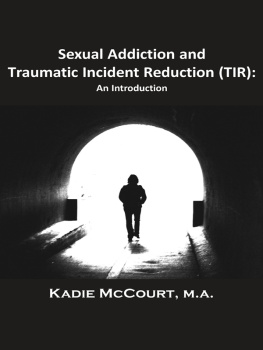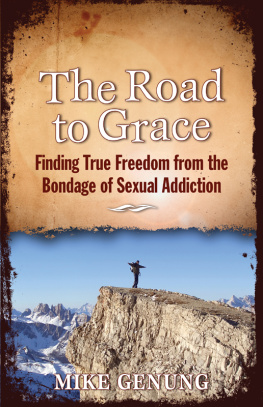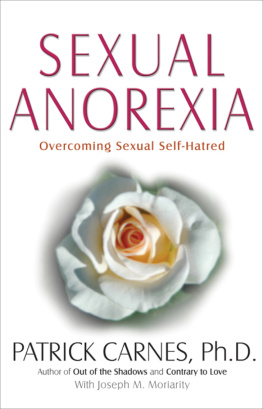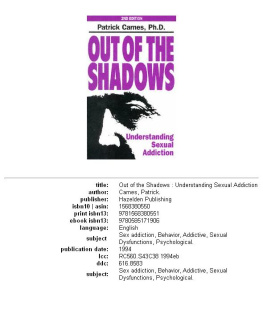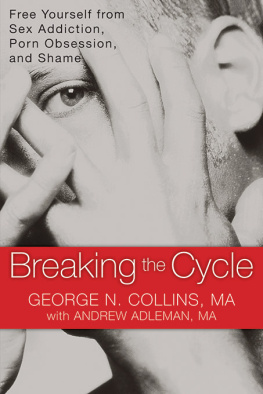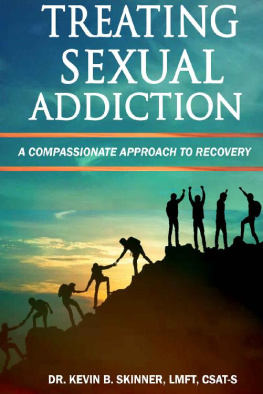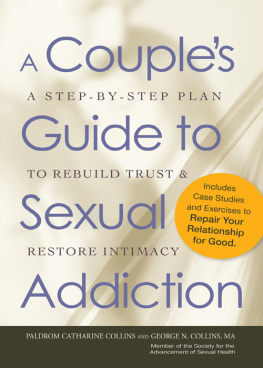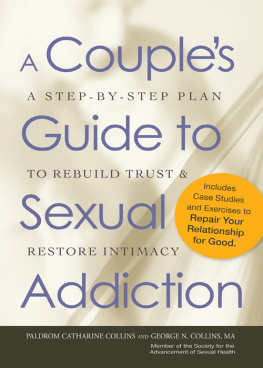Kadie McCourt - Sexual Addiction and Traumatic Incident Reduction (TIR): An Introduction
Here you can read online Kadie McCourt - Sexual Addiction and Traumatic Incident Reduction (TIR): An Introduction full text of the book (entire story) in english for free. Download pdf and epub, get meaning, cover and reviews about this ebook. year: 2012, publisher: Loving Healing Press Inc., genre: Home and family. Description of the work, (preface) as well as reviews are available. Best literature library LitArk.com created for fans of good reading and offers a wide selection of genres:
Romance novel
Science fiction
Adventure
Detective
Science
History
Home and family
Prose
Art
Politics
Computer
Non-fiction
Religion
Business
Children
Humor
Choose a favorite category and find really read worthwhile books. Enjoy immersion in the world of imagination, feel the emotions of the characters or learn something new for yourself, make an fascinating discovery.
- Book:Sexual Addiction and Traumatic Incident Reduction (TIR): An Introduction
- Author:
- Publisher:Loving Healing Press Inc.
- Genre:
- Year:2012
- Rating:4 / 5
- Favourites:Add to favourites
- Your mark:
Sexual Addiction and Traumatic Incident Reduction (TIR): An Introduction: summary, description and annotation
We offer to read an annotation, description, summary or preface (depends on what the author of the book "Sexual Addiction and Traumatic Incident Reduction (TIR): An Introduction" wrote himself). If you haven't found the necessary information about the book — write in the comments, we will try to find it.
Sexual addiction is strongly anchored in shame and trauma. Research conducted over the past fifteen years has consistently shown the prevalence of emotional, physical and sexual abuse in this population (Cox & Howard, 2007, p. 1). As well, there is also high co-morbidity of sexual addiction with other addictive disorders. An additional layer of sexual addiction is the underlying shame associated with the actions and behaviors the client engages in for this addiction. This intense shame is likely to fuel and perpetuate the cycle of the addiction. With such a strong link, it is important for clinicians to address the underlying trauma while assisting clients with sexual addiction (Cox & Howard, 2007).
To assist clients in overcoming a sexual addiction there are minimal options. Unlike gambling where absolute abstinence from the behavior is the desired effect, this type of a decision regarding sex will hinder a healthy relationship. One strategy is to use a Sexual Boundary Plan (Weiss, 2004). Fortunately, with Traumatic Incident Reduction (TIR) and related techniques, this is not the only strategy to assist clients with a sexual addiction.
It is important to remember that a sexual addiction is similar to alcoholism in that the individual uses sex to cope with pain and numb difficult feelings. For the sex addict, sex is mood altering like a drug, and the individual needs more and more to achieve the same elevated feeling. Often this results in more frequent sexual behaviors and increased risks. Sex becomes the focus in a persons life and thus there is no room for healthy relationships. In addition to abuse experiences, other traumas for the sexual addict are betrayal, abandonment or rejection. If the betrayal is severe enough, trauma results. Fear and terror become the catalyst that allows betrayal to move into the area of trauma (Cox & Howard, 2007, p.6).
From the Metapsychology Monographs Series
Learn more at www.TIRBook.com
Kadie McCourt: author's other books
Who wrote Sexual Addiction and Traumatic Incident Reduction (TIR): An Introduction? Find out the surname, the name of the author of the book and a list of all author's works by series.

